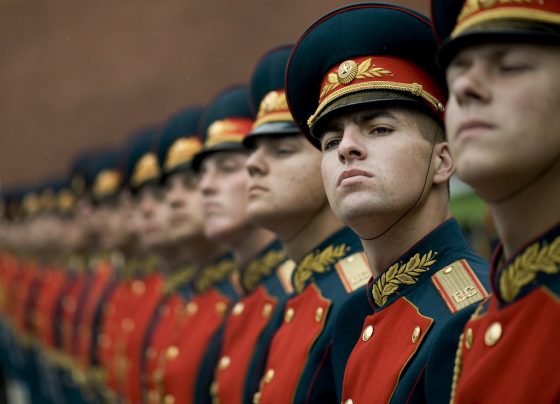BESA Center Perspectives Paper No. 1,097, February 26, 2019
EXECUTIVE SUMMARY: One of the cyclical patterns of Russian history is the country’s perpetual quest for military modernization. This quest was pursued by the Romanovs and the Soviets and continues in modern-day Russia. Military spending is always prioritized over essential economic and social reforms, hampering the country’s competitiveness on the world stage and paving the way for its weakening and eventual disintegration.
When we consider the remaining years of the 2010s and look forward into the 2020s, we can clearly see that Russia’s decline in terms of technology, the knowledge economy, and the economy in general will continue to be the dominant trend. A driving factor behind this development is the country’s exorbitant military spending.
Such spending has long been a key factor in Russian history. Russia’s “resurgence,” which appeared to be so robust in the 2000s, already contained many elements of its forthcoming decline. That decline is a complex phenomenon encompassing factors ranging from demography to infrastructure to corruption.
In 2011, an increase in petro-revenues reassured the Moscow leadership of the availability of resources to build up the country’s military might, resulting in approval of the hugely expensive 2020 Armament Program. This mega-investment coincided with the curtailing of many of Medvedev’s “modernization” program initiatives and was criticized by many economists as too big.
This goes hand in hand with what numerous foreign and domestically produced reports identify as a significant decline in Russian scientific productivity. This was even reported by the Russians themselves at times when oil prices were high, which had led many to believe that Russia was resurgent across the Eurasian landmass.
In 2008, the Russian Academy of Science reported on Russia’s Scientific-Technical Development until 2030, noting that the country is losing its technological base as it becomes increasingly dependent on revenues from the sale of natural resources such as gas and oil. Other fundamental problems are inefficiency and high levels of corruption.
However, those problems were not visible to many ordinary Russians at the time, largely due to the focus on the Ukraine crisis, flare-ups in the confrontation with the West, dropping oil prices, and other issues. Corruption and low scientific output are not enough to result in domestic troubles as long as there is sufficient income into the budget. Once income ceases, wounds open and pressure grows for greater accountability from Russian officialdom.
The pattern playing itself out in Russia today matches what has happened in the country’s past. Russia’s history is in many ways cyclical: there is a tendency for fundamental processes to play out the same way again and again over the long term. By the late 1980s, when the Soviet Union was in its last years, Moscow was fundamentally lagging behind the West in terms of technology and other important sectors. Oil prices were low and there was high demand for reform, despite the fact that there was an abundance of resources available to move the country forward. Those financial and natural resources were spent on huge military apparatuses and the development of deadly technologies. The result, predictably, was the dissolution of the Soviet Union.
Going further back in Russian history to the early 20th century, just before the outbreak of WWI, we see a clear demand within the government and among the country’s elite for social and economic reforms across the empire. However, this was also a period of militarization in Europe, and there were signs of the coming world conflict. While there were politicians who disagreed with the military build-up, Emperor Nicholas II nevertheless chose to spend large sums on quick militarization. At the time, there were clear developments showing how backwards (in comparison with Western Europe) Russia was both economically and militarily. Over-spending on the military could have been predicted to spell catastrophe for the government, as indeed occurred in 1917 when the Russian Revolution broke out.
The same pattern could be seen under earlier Russian leaders as well: the government breaking out into hardline supporters of large subsidies for military reforms on one side and liberals on the other. Historically, the hardliners almost invariably gain the upper hand.
Russia has been experiencing this pattern yet again over the past decade. While debating what is more crucial for the Russian state – social/economic reforms or major military spending – the government decided in the 2000s to initiate a quick military resurgence.
This “military overload” (voennaia nagruzka in Russian) functions in the modern Russian state, just as it did in the cases enumerated above, as the “main source of structural deformation.” Moreover, bureaucratic measures designed to speed up scientific-technical progress turn out to be unproductive. As in earlier periods of Russian history, within the past decade there has been a struggle between hardliners and economic liberals. In this battle of visions for Russia’s future, then-Finance Minister Aleksei Kudrin was dismissed in 2011 when he openly criticized the level of military spending.
Put into the context of Russia’s perpetual “military overload” problem, the recent US pullout from the Intermediate-Range Nuclear Forces Treaty (the INF Treaty) will likely set up a race for military technologies. The US decision will further embolden Russian hardliners and weaken the liberals. This will probably result in Moscow’s spending more money on the military, reinforcing the cyclical model.
Emil Avdaliani teaches history and international relations at Tbilisi State University and Ilia State University. He has worked for various international consulting companies and currently publishes articles on military and political developments across the former Soviet space.


